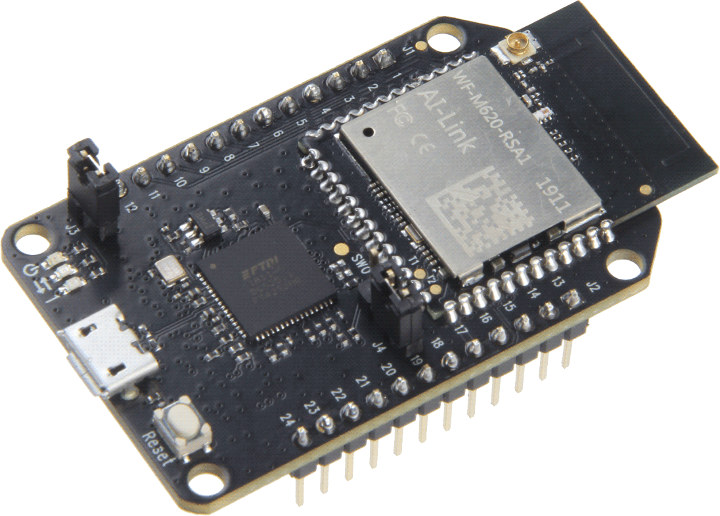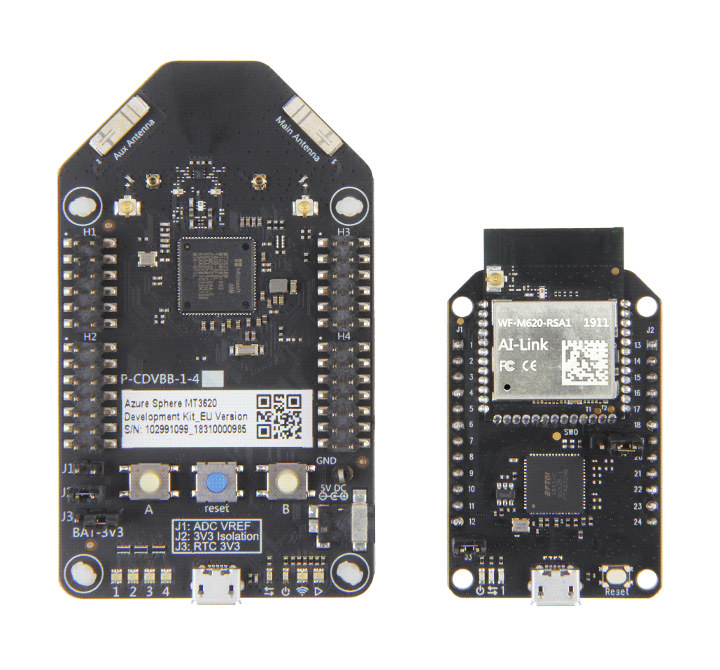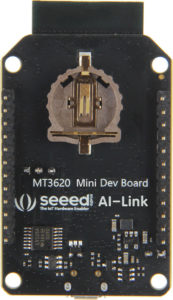Announced nearly one year ago, Microsoft Azure Sphere is an ecosystem comprised of Azure MCUs with Microsoft Pluton Security System, Linux based Azure Sphere OS, and a secure cloud service called Azure Sphere Security Service. The first official Azure development board – MT3620 Development Board for Azure Sphere – was launched last year for $84.95.
The kit may not have attracted a large number of developers, so there’s now a cheaper version – MT3620 Mini Dev board – going for $34.90 on Seeed Studio. Note that’s a pre-order and shipping is scheduled for May 13, 2019.

MT3620 Mini dev board specifications:
- CPU Module – AI-Link WF-M620-RSA1 module with
- Mediatek MT3620AN single core Arm Cortex-A7 processor @ 500 MHz with 4MB SRAM, dual core Arm Cortex-M4F real-time core @ 200 MHz with 64KB RAM, Pluton security sub-system, and WiFi.
- Storage – 2x 8MB dual channel quad SPI (TBC)
- Connectivity – Dual band 802.11 a/b/g/n WiFi 1T1R with main and aux PCB antennas, and two u.FL connectors
- I/Os via castellated holes
- ISU0 configured as SPI 0 or UART 0
- ISU1 configured as SPI 1 or I2C 1
- 8x PWM
- 4x ADC
- 14x GPIO
- Dimensions – 30 x 22 x 2.5 mm
- USB – 1x micro USB port for programming and power
- Expansion – 2x 12-pin headers for I/Os including 3x 12-bit ADC, I2C, SPI, UART, etc…
- Misc – RTC CR1220 battery holder, reset button. 1x user LED, power and FDTI status LEDs, jumpers for power source selection
- Power Supply – 5V via micro USB port
- Dimensions – 60 x 34 x 19 mm
- Temperature Range – -40 to +85 °C
- Certifications – CE, FCC, MIC, RoHS

The mini development board can be programmed just like the original MT3620 board, that is using C programming language in Visual Studio for Windows 10. While Azure Sphere was announced nearly one year, the SDK still does not fully support the hardware, since the two Arm Cortex-M4F cores are yet to be supported, and if you intended to leverage those ADC, I2S, and PWM interfaces, you’ll have to wait a bit longer.
The AI-Link WF-M620-RSC1 module and an Ethernet Shield can be purchased separately for $19.90 and $18.90 respectively. I could not find the difference between WF-M620-RSA1 module fitted to the development board, and WF-M620-RSC1 module sold separately, but A could stand for “America” and C for “China” (TBC).

Jean-Luc started CNX Software in 2010 as a part-time endeavor, before quitting his job as a software engineering manager, and starting to write daily news, and reviews full time later in 2011.
Support CNX Software! Donate via cryptocurrencies, become a Patron on Patreon, or purchase goods on Amazon or Aliexpress





